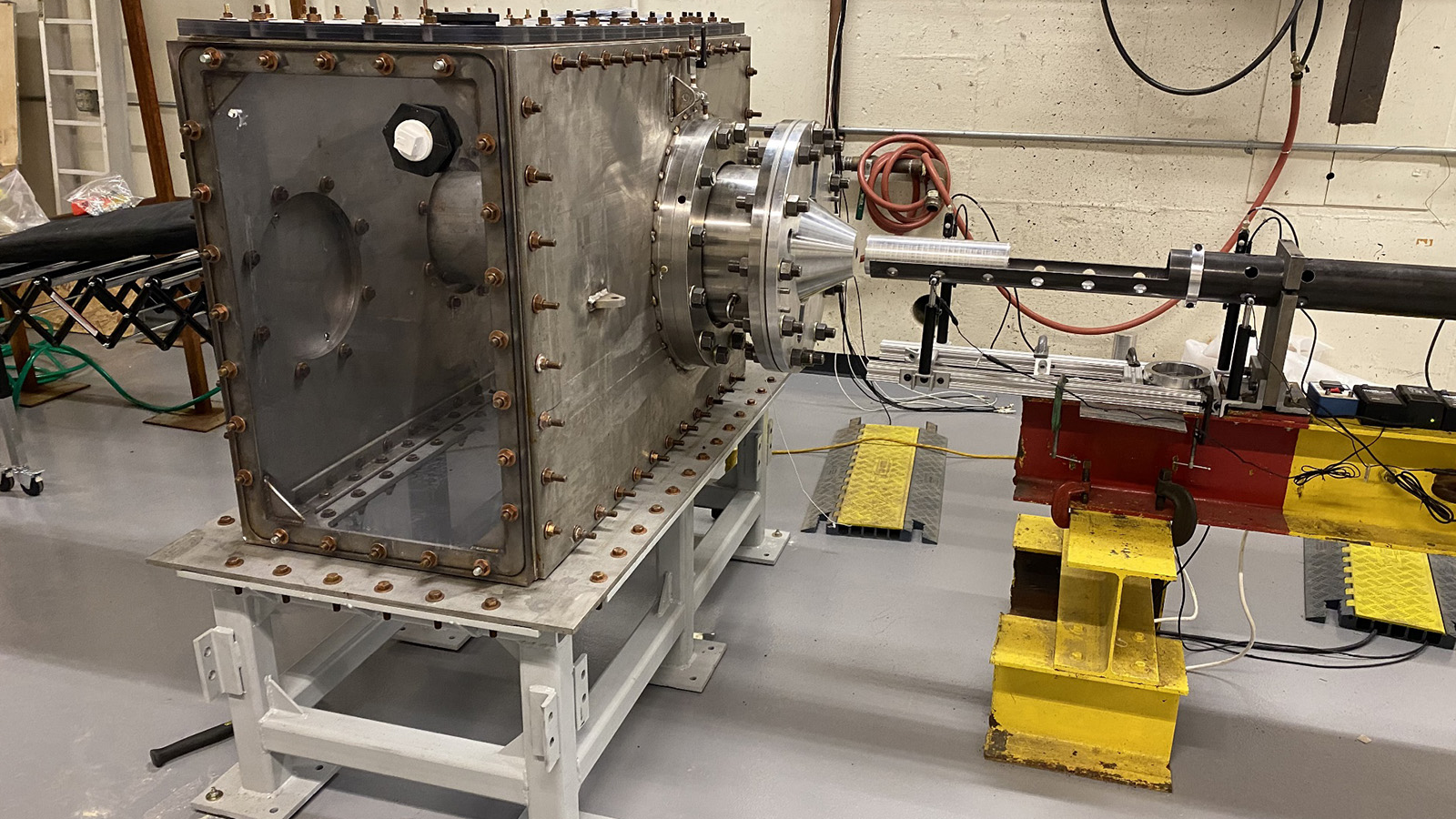Stay Up to Date
Submit your email address to receive the latest industry and Aerospace America news.
The Survivability Technical Committee promotes air and spacecraft survivability as a design discipline that includes such factors as crashworthiness, combat and reparability.
The Aviation and Missile Center of the U.S. Army Combat Capabilities Development Command and Lockheed Martin’s Sikorsky company in January notified the Army’s Future Vertical Lift Cross Functional Team that they have advanced their system of spaced armor sufficiently to incorporate the technology into rotorcraft and other aircraft. This novel integrated system of polyethylene panels maintains threat protection while weighing less than alternatives. The two-part system consists of a striker panel, which causes the projectile to tumble and could be incorporated into an aircraft’s outer skin, and a catcher panel, which stops the tumbled projectile and could be incorporated into a floor or inner wall. The developed capability was demonstrated in 2020 at Fort Eustis, Virginia. Ballistic testing on a representative rotorcraft fuselage, incorporating protection from an ultra-high molecular weight polyethylene fiber-based composite laminate for both the striker and catcher, showed the feasibility of the integration architecture and relevant protection levels at reduced areal density compared to traditional armors. To continue maturing the technology, different materials and ballistic threats were investigated throughout the year for improved performance-to-weight ratio, and rotorcraft integration will be further investigated to minimize weight impacts.
A Hydrodynamic Shock Test Apparatus, HSTA, was tested in January at Wright-Patterson Air Force Base, Ohio, in the Aerospace Vehicle Survivability Facility operated by the 704th Test Group. In the months since, HSTA has provided a foundation for studying structural skin/joint/spare component failure caused by ballistic impacts on aircraft fuel tanks, as well as on related functional components such as fuel lines and pumps. Testers and designers can now evaluate joint pull-off and shear failure due to both symmetric and asymmetric loading conditions. Visual data is collected by high-speed video cameras, which was not possible with the previous test device. The testing in January demonstrated that the new HSTA striker and fuel tank apparatus minimize noise in the collected test data, enabling more accurate pressure and strain measurements; repeatability in the testing also showed improvement. The improved capability provided by the HSTA is enabling the design of more survivable aircraft fuel tank structural components, as well as the functional components contained within the tanks, for both future aircraft and upgrades to current fleet aircraft.
In the space realm, the U.S. Air Force Institute of Technology at Wright-Patterson continues to expand its analytical purview to include spacecraft safety and survivability in the cislunar domain between the Earth and the moon in support of the growing U.S. space enterprise. Throughout the year, AFIT has delved into topics such as space system survivability to hypervelocity debris impacts originating from catastrophic breakup events within cislunar space, as well as assessing satellite survivability with respect to micrometeoroids and dust near the stable Earth-moon Lagrange points. AFIT research during July and August extended the topic of spacecraft survivability to lunar orbit, with efforts to simulate debris events with respect to an ephemeris-based gravitational field. The goal of this analysis is to ascertain the susceptibility risks of not only orbiting spacecraft, such as NASA’s planned lunar Gateway, but also facilities that may be built on the lunar surface. The concept of formulating spacecraft fragility curves is also being explored, based on existing empirical vulnerability studies of space system components exposed to low- and high-velocity impacts. Looking ahead, spacecraft survivability research is planned to examine debris risks within the context of cislunar rendezvous and proximity operations, and the use of periodic cislunar orbits for Space Domain Awareness missions.
Contributors: Brian J. Barlow, Robert A. Bettinger and Alex Q. Weintraub
Stay Up to Date
Submit your email address to receive the latest industry and Aerospace America news.




